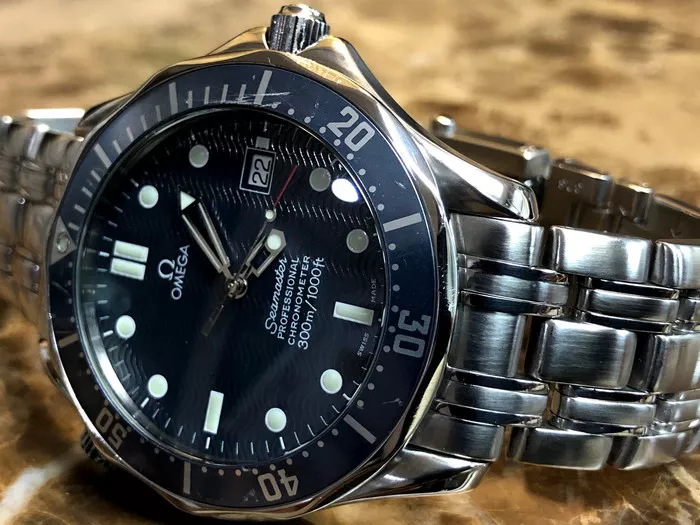In the realm of horology, Omega stands as a paragon of excellence, synonymous with precision, craftsmanship, and timeless design. As enthusiasts and prospective buyers navigate the intricate world of luxury watches, a common question lingers: Is an Omega watch expensive? In this exploration, we will dissect the factors that contribute to the perceived expense of Omega timepieces, providing a comprehensive understanding of what makes these watches coveted and, at times, labeled as expensive.
1. Heritage and Craftsmanship: A Timeless Investment
Omega, a Swiss watchmaker founded in 1848, boasts a rich heritage that spans over a century. The brand’s commitment to exceptional craftsmanship, innovation, and precision has solidified its place among the elite in the watchmaking industry. Each Omega timepiece is a culmination of decades of expertise, blending traditional watchmaking techniques with cutting-edge technology.
The dedication to quality materials, intricate detailing, and precision engineering inherently adds to the cost of Omega watches. For many, the expense is justified by the knowledge that they are not merely purchasing a timekeeping device but investing in a piece of horological history.
2. Innovation and Technology: The Price of Advancement
Omega has been at the forefront of watchmaking innovation, introducing groundbreaking technologies that have redefined the industry. The introduction of the Coaxial escapement and the Master Chronometer certification are just a couple of examples of Omega’s commitment to pushing the boundaries of what a mechanical watch can achieve.
However, such advancements come at a cost. The research, development, and implementation of cutting-edge technologies contribute to the overall expense of Omega watches. For those who value innovation and seek watches that marry tradition with modernity, the price tag may be seen as a reflection of the brand’s commitment to staying ahead of the curve.
3. Materials and Aesthetics: The Allure of Precious Metals
Omega watches are often crafted from the finest materials, including stainless steel, gold, and even platinum. The use of precious metals not only enhances the aesthetic appeal of the timepieces but also adds to the overall cost. Gold, in particular, is a symbol of luxury and wealth, and Omega’s gold watches carry an intrinsic value that resonates with those who appreciate opulence.
The meticulous attention to detail in the finishing, the quality of the dials and hands, and the choice of materials contribute to the premium feel of Omega watches. The use of scratch-resistant sapphire crystals and high-quality leather or metal straps further adds to the expense but ensures durability and longevity.
4. Exclusivity and Limited Editions: Rarity Commands a Price
Omega, like many luxury brands, often releases limited edition watches that are highly coveted by collectors. The exclusivity of these timepieces, coupled with unique design elements or historical significance, can significantly drive up their price. Collectors and enthusiasts alike are willing to pay a premium for a watch that is not only a symbol of status but also a rare and unique piece in their collection.
Limited editions often incorporate special materials, intricate engravings, or unique complications, further justifying the higher price point. For those who value owning a piece of horological history that is not readily available to the masses, the expense becomes a worthwhile investment.
5. Brand Prestige and Recognition: Beyond the Watch Face
The Omega logo, the iconic Seamaster emblem, and the association with James Bond movies—all contribute to the brand’s prestige and recognition. Owning an Omega watch is not just about telling time; it’s about wearing a symbol of status and sophistication. The brand’s presence in popular culture, its association with space exploration through the Speedmaster, and its longstanding partnerships with prestigious events like the Olympics all contribute to the perceived value of Omega watches.
The intangible elements of brand recognition and the emotional connection one feels with a watch brand can often be more influential in the decision to purchase than the tangible features of the timepiece itself. This intangible value, rooted in history and cultural significance, adds a layer of perceived worth to Omega watches.
Conclusion: Beyond the Price Tag
In the journey to understand whether an Omega watch is expensive, it becomes evident that the price tag extends beyond the tangible components of materials, craftsmanship, and technology. Omega watches encapsulate a legacy, a commitment to excellence, and a connection to a brand that has left an indelible mark on the world of horology.
While the cost of an Omega watch may be deemed high by some, it’s crucial to recognize that the value extends far beyond the numerical figure. It encompasses the heritage, innovation, materials, and intangible allure that makes an Omega watch not just an accessory but a statement of refined taste and appreciation for the art of watchmaking. In the world of luxury timepieces, an Omega watch is not merely expensive; it is an investment in a timeless legacy.

